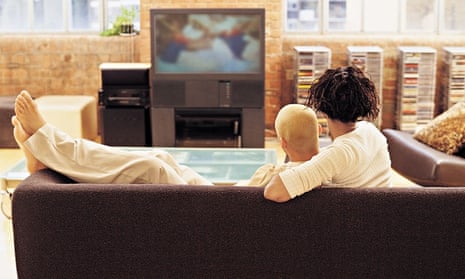Did you buy a smart TV or set-top box or tablet any time before January 2013? Do you watch YouTube on it, perhaps through an app? Bad news: Google has shut down the feed that pushed content into the app. You may have noticed this of course: one person contacted me on Twitter to complain their daughter now couldn’t watch an ad-free YouTube video on his first-generation iPad (that’s 2010) via the YouTube app. Millions of people will be having the same experience. It’s not only iPads; pricey Sony, Samsung and Panasonic “smart” TVs (with built-in app capabilities) were sold by the truckload, and the idea was that they would be the future. Mediatel forecast in November 2012 that more than 100 million households would be “smart” by 2013, and by the end of that year Samsung said the apps were used on two out of every three North American smart TVs
As people tend to replace their TV about every 10 years, there’s not much chance those buyers are in the mood to update yet – especially as everything else will work, just not the YouTube app. (You might be able to access YouTube if the device has a web browser. Not all do, though.)
Google explains that this disconnect is because the API – the software interface – for remote access to YouTube has been updated from version 2 to version 3 (v1 was buried back in 2009; v2 surfaced in August). V3, launched in December 2012, offers more capability – though nothing that really matters to someone watching on an iPad or smart TV.
As a user, do you care that the data comes back as JSON, not XML? That you can search on topics, or that v3 has “audience support” for content creators? I’d guess not. For the average user, v3 has nothing to recommend it over v2; if you’ve got an affected device, the whole useless app thing doesn’t commend it.
But of course you don’t get to decide whether Google moves from v2 to v3. And Google is perfectly within its rights to make that change. The v3 capabilities make sense in the context of how YouTube is changing – towards “channels”, and also integrating Google+ (which hasn’t quite died). This doesn’t mean people have to like it, though. Oddly, Google declined to discuss how many devices were still using v2 when it cut them off, though it must know because every device that connects to its servers identifies which API version it wants. Usually, when such a number is very small, companies say: “It’s really very small.” The absence of that statement seems odd.
The bigger lesson from this, though, is that there’s now a new dimension to obsolescence. We usually fret about the hardware in our “smart” devices becoming superannuated as the ever-increasing demands of the web or whatever the internet throws up next will leave fixed processor power wheezing.
Now we have to worry too about software spigots being turned off. That’s not a hardware problem; it’s a more deeply embedded system problem, where the hardware is fine, the supplier of the data feed heads off in another direction, and the hardware maker might or might not be willing to update its product. It’s not only smart TV makers who are affected; owners of early Google TV set-top boxes are out in the cold too. You’d think that Google might be able to update that software to cope with a new API? After all, it’s only a little remote reprogramming. But apparently not.
In the face of this sort of systemic indifference from all the companies involved, the best option is clearly to spend as little as possible on anything with built-in processing power. Don’t buy a smart TV; buy a dumb one, and add a cheap set-top box or HDMI stick (Google’s Chromecast or Amazon’s Fire TV Stick or the Roku TV are about £40; the Apple TV is £59). Grit your teeth and scrap it when the hardware or software or API gets outdated.
But if companies wonder why we don’t buy their big promises – 3D TVs spring to mind – this is an object lesson. When a smart TV costing thousands can be hobbled by a third party’s tweak to a software interface that brings no obvious user benefits, it erodes our trust in the edifice of the technology world.

